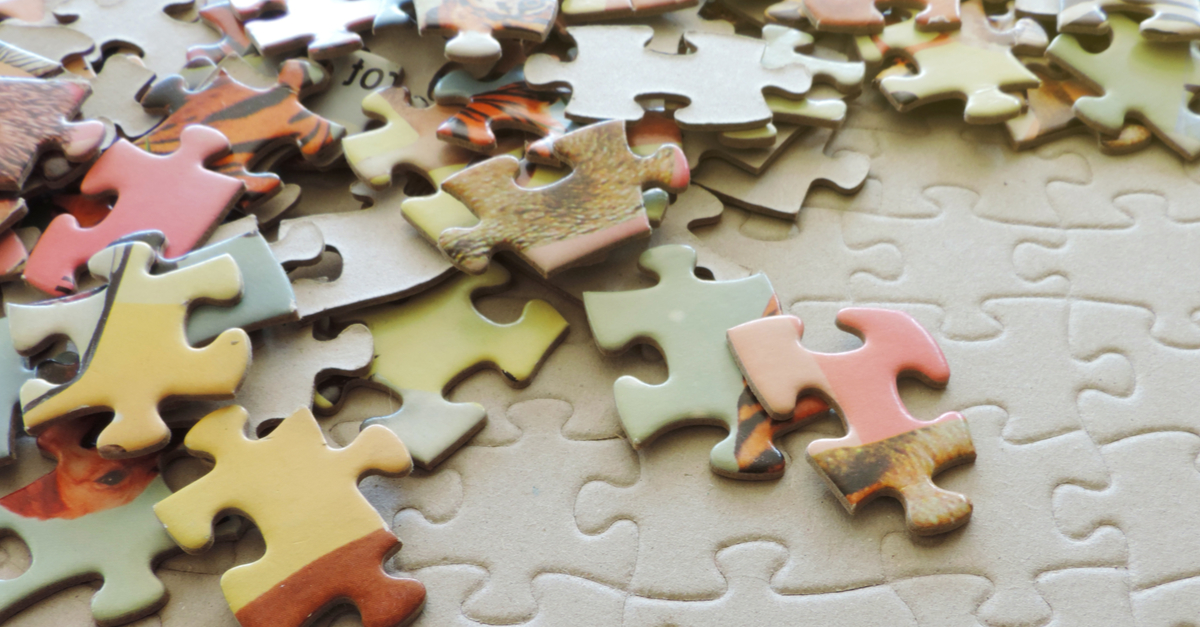craft post by Jen Jobart
The Worldbuilding chapter of the John Truby’s book The Anatomy of Story was the culmination of several things that help me to realize that there are a finite number of stories that can be written. There are endless ways to write those stories, but we humans are all the same species (that I know of) and we evolve and grow and change in the same way. And that’s what stories are about – evolving and growing and changing.
It’s as if the universal story structure is a 1000 piece puzzle. The pieces themselves are complex, and there are a lot of them. But once you understand how to put them all together, you can change out the picture and put them together again. And again, with a new picture. Someone else looking at the finished puzzles would believe that they’re all completely different, since they’re looking at the picture. They don’t see the relationship of the pieces below. If the shapes were put together wrong, or if some were missing, the picture wouldn’t be as good. Someone admiring a finished puzzle, or, a reader, only perceives the structure unless something’s wrong with it. If the puzzle is put together correctly, that person will only see the picture.
But you, as the person who put the same shapes together every time, or writes the book, know that the puzzles aren’t so different underneath. In fact, they’re all built with exactly the same pieces, fitting with each other in the same ways. Every time you build the puzzle, it gets easier.
1000 is a lot of pieces, and likewise, there is a lot to learn about story. But I’m starting to realize that there are a finite number of pieces in the puzzle of story. The more I write, and the more I study writing from the masters like Blake Snyder, Lisa Cron, John Truby, Cheryl Klein, Mary Kole, Harold Underdown and Shawn Coyne, the better I understand the pieces.
Now. Your soul and the muse still need to work together to create the beautiful picture on the puzzle. The picture, or the finished book, are what will touch the hearts of your readers. If you got the puzzle pieces right, that is. If you didn’t, well, it just isn’t quite the same effect. Mona Lisa just wouldn’t be quite the same with a missing nose.
I think there are multiple ways to learn about the pieces of story. I do think that there are people who sort of learn writing by osmosis. Stephen King’s book On Writing makes me think he’s one of those people.
But I’m not. I have to deliberately go out and find the masters and learn from them. When I read the book I was working on a few years ago, I cringe. Most of Mona Lisa’s face is missing. But the thing is, I know why it’s bad. I know how I fixed it and I know how to write it better the next time.
I think I’m realistically 250 pieces in. It may take me the rest of my life to learn the remaining 750 pieces, but every piece I learn makes the puzzle look that much better. Someday, I’ll have the entire picture.
Jen Jobart writes middle grade fiction and is always sending characters she loves on dangerous adventures. She is an active member of the SCBWI and has studied writing for children through Stanford’s Continuing Studies program. When Jen’s not writing, she’s outside gardening and raising chickens at her home in the San Francisco Bay Area. Find her at www.jenjobart.com.


Love this, Jen! I have had a similar experience as I get farther into the learning process. Well said.